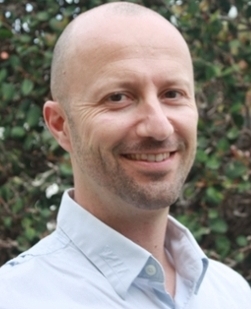Cédric G. Geoffroy, PhD

Assistant Professor
Contact
Department of Neuroscience & Experimental Therapeutics
4100 Medical Research and Education Building
8447 John Sharp Parkway
Bryan,
TX
77807
geoffroy@tamu.edu
Phone: tel:979-436-9023
Fax: 979-436-0086
Lab Website
Education and Training
- University of Cambridge, United Kingdom, PhD
- Department of Neurosciences, UC San Diego, Postdoctoral
- Department of Neurosciences, UC San Diego, Assistant Project Scientist
Research Interests
- The main focus of the laboratory is to better understand the molecular, cellular and physiological changes occurring after neurotrauma, particularly after spinal cord injury (SCI). SCI is the second cause of paralysis, following close behind stroke. Besides the direct locomotor impairments, SCI also leads to numerous health complications, including metabolic syndrome, cognitive functions, cardiovascular and gastrointestinal problems. These health complications not only threaten patients' lives but also impact their quality of life. Therefore, one major aim in the lab is to better understand the physiopathology of SCI and health complications occurring after chronic SCI. A second goal of the lab is to understand how age impacts SCI, particularly axon regeneration, and identify ways to promote axon growth and enhance functional recovery.
- 1) Age-dependent decline in axon growth potential can reduce efficacy of promising regenerative strategies: SCI increasingly afflicts the middle-aged population as a result of both later average incidence (from ~29 in the 1970s to ~42 since 2010) and aging of SCI-paralyzed patients (~75% of people with SCI are over 40 years old). Recently, the team demonstrated that axon regeneration is impaired after injury in older animals. This decline in axon growth can be controlled by both neuronal intrinsic and extrinsic factors (including inflammation and glial response). By better understanding the players involved in this age-dependent growth decline, they aim to find targets to promote axon growth after SCI and ultimately promote locomotor function recovery in the middle-aged population.
- 2) Chronic spinal cord injury induces cardiometabolic issues: Recent data demonstrate alteration in the liver function in mice with chronic spinal cord injury, which is also associated with cardiovascular complications. Reducing liver dysfunction and metabolic syndrome is an important avenue of research to increase overall health of patients with SCI. The team uses genetic and pharmacological tools to reduce SCI-associated health problems.
- 3) Repair and enhance bowel activity after SCI: Bladder and bowel dysfunction is a major issue after SCI. The team studies how SCI impacts bowel functions and tests ways to enhance bowel health and colonic activity, using genetic tools, pharmacological approaches and electrical devices.
- 4) New strategy for in vivo drug delivery and gene targeting: The team has demonstrated the efficacy of a new non-viral somatic gene targeting strategy using CRISPR/Cas9 (in collaboration with Thermo Fisher). This technique will allow rapid screen of gene functions directly in vivo. The team is interested in developing new tools for drug and gene delivery in vivo, in collaboration with chemists and biochemists at Texas A&M.
- For all these projects, techniques used include molecular biology (PCR, plasmid construction, virus…); biochemistry (western blotting…); genetics (RNA-sequencing, gene-editing, transgenic animals); cell culture (primary cell culture of neurons, astrocytes, macrophages, stem cells, intestinal cells); live cell imaging; flow cytometry; immunocyto- and histochemistry; fluorescent microscopy; tissue clearing and 3D imaging; small animal surgeries (spinal cord injury models, intraspinal and intracranial microinjections, colon surgeries); non-invasive measurements (cardiovascular functions analysis, ultrasound imaging, blood collection…); locomotor function analysis; and drug testing (in vitro and in vivo).